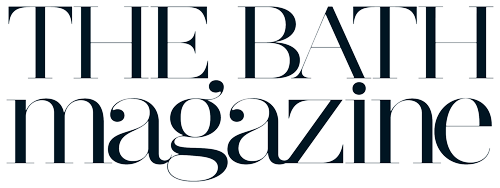Swallow and peregrine, yellowhammer and sedge warbler. What do these names mean and where do they come from? Stephen Moss is the man to ask and he’s coming to BRLSI on 6 November to give away some of these bird-naming secrets, also found in the pages of his book, Mrs Moreau’s Warbler. Words by Emma Clegg.
Naturalist, broadcaster and author Stephen Moss tells me that he has a particular condition that compels him (for example) to look out of his window at the greenfinches on his birdfeeder instead of concentrating on answering my questions. I assure him that I can cope with this idiosyncrasy, especially because we are talking about birds.
Stephen is the author of the evocatively named Mrs Moreau’s Warbler and in November he’s giving a talk at BRLSI about the book. In it he considers the origins of common bird names and how they reveal as much about ourselves and our relationship with the natural world as about the creatures they describe.
Stephen defines three clear categories for the naming of birds. The first is where bird names describe some obvious feature of the bird – its sound, colour, pattern, shape, size or behaviour. Think cuckoo, chiffchaff, blackcap and greenfinch.
Birds named in this way comprise the bulk of their given names, Stephen explains. But some are clearer than others. “It’s very obvious that a bird called yellow wagtail, woodpecker and treecreeper are named after their colour and habits. But it’s less obvious that nuthatches are [their name comes from their habit of wedging a nut or acorn into a tree’s bark, and by repeatedly striking the nut, ‘hatching’ the seed within it]. It’s also obvious that cuckoo and chiffchaff are onomatopoeic, linking to sound; but less obvious that rook, crow and raven [all derived from the birds’ harsh calls] are also named after sounds.”
The second of the three categories was used from the 17th century when names were based on more arcane aspects of birds’ lives such as where they were first identified, such as the Kentish plover and the Sandwich tern. This category also includes habitat-based names such as reed, sedge and willow warbler. The third category (described by Stephen as “in many ways the most beguiling”) is birds that are called after people, such as Montagu’s harrier (after a soldier and ornithologist), Bewick’s swan (after the engraver Thomas Bewick), and indeed Mrs Moreau’s warbler, whose story we take up later.

Mmmm… suddenly it’s all sounding more complex… and rather inconsistent. “Language changes and shifts, and you have to be a detective to find out the origins, and the other paradoxes about bird names”, says Stephen. “The book is about birds of course, but it’s just as much about history, both British and global, and language, and the evolution of language.”
One of the complexities is that – as with all matters of language – bird names are not static; they evolve over time. “I looked at a bird book the other day that is over 100 years old. It mentions willow wren instead of willow warbler, and hedge sparrow instead of dunnock, which was a name I would have used when I was a child. So names do get changed, but it’s quite a slow process”, says Stephen.
Take the bird that we know as the robin. “People have been calling robins ‘robin’ since the 14th century, but initially they were called ‘ruddock’, an Anglo Saxon word meaning ‘red bird’. Then it was named redbreast, but nicknamed robin redbreast as a nice alliterative term – but somehow, robin took over.”
There are also deliberate changes in bird names where the original name has an offensive association, such as an African bird that used to be referred to as the negrofinch, now called nigrita. This changing of names often applies to birds named after people. “The issue with many of the birds named in America is that a lot of the men after whom these birds were named were Confederate soldiers, who kept slaves and voted for slavery”, says Stephen. So the small ground-feeding bird McCown’s longspur has been given the new name of thick-billed longspur because the old name belonged to Captain John P. McCown, an officer in the Confederate army, the naturalist who first collected the species in 1851.
The meaning of names can become unfamiliar too. Stephen visited Slimbridge Wetland Centre in Gloucestershire with a group of his students from Bath Spa University where he teaches on the MA in Nature and Travel Writing. “While we were there we saw a snipe. And I explained how the word sniper comes from this bird, because when snipes fly, they zigzag – and so are considered the hardest bird to shoot. So if someone is good enough to shoot a snipe, then they are a sniper.”

Interestingly some bird names have inspired other common words. “Kite and crane (both Old English) are the original names of birds that became ‘kite’ as in the children’s toy and ‘crane’ as in a crane because of the shape or look of them. Bird names using archaic words have a tendency to endure, even though the original meanings are less used. With the birds redshank or redpoll – we know of lamb shank in a menu and the poll tax, but we don’t talk about shank for legs or poll for head anymore.”
Ancient names also adapt around the prevailing language culture. “The Anglo-Saxon ‘yellow ammer’ (from the German word for a bunting) became yellowhammer; ‘red steort’ (meaning red tail) turned into redstart; and ‘wheteres’– literally white arse, changed into wheatear. In Anglo Saxon, those words made perfect sense, but when the Norman Conquest happened and language changed very quickly, those words became archaic.”
Not every bird name can be explained, however. “Most of the common and familiar birds are the ones where we don’t know how they got their names, because the names are 1000s of years old. Sparrow, starling, swallow, wren and swan are all examples of this.”
It feels as if the lack of clear etymology in these bird names makes them more powerful and entrenched, entwined as they are in our distant history. “The word swan links linguistically to the German schwan and the Dutch zwaan, clear evidence that they share a common origin in the language known as West Germanic, which was spoken around the time of Christ’s birth.” *
This brings us back to Mrs Moreau’s warbler. Stephen first read about this bird when he was 10 years old in his regularly delivered magazine, Birds of the World. He discovered that the bird name was given by ornithologist Reg Moreau after his wife Winnie, also an ornithologist, after they discovered the warbler in 1938 on an expedition to the Uluguru Mountains in eastern Tanzania. In January 2017, almost half a century after he first read about Mrs Moreau’s warbler, Stephen finally travelled to the Uluguru Mountains on a quest to see this bird for himself. He describes, “… a small, slender bird, brownish buff, with a long, thin bill, and an orange chest, throat, head and neck, it looks rather like a robin whose red breast has extended upwards to cover its whole face and crown. As if to acknowledge me, it utters one more burst of song, and then melts back into the forest.” *
“I do get very emotionally involved with my encounters with birds because these moments have shaped my life. But when I finally saw Mrs Moreau’s warbler I felt overwhelming emotion because this bird may become extinct in my lifetime. It’s a very beautiful bird, and I thought about Reg and Winnie Moreau in the 1930s when they came across it, and how astonished they must have been.”
As Stephen says in his book, “From the familiar robin, chaffinch and blackbird to the Uluguru violet-backed sunbird, Udzungwa forest partridge and Mrs Moreau’s warbler, bird names are far more than just words. Every single one of them tells a story – a story that runs parallel with our own human narrative.”
* Stephen Moss, Mrs Moreau’s Warbler

Mrs Moreau’s Warbler: How Birds Got Their Names, talk by author Stephen Moss at BRLSI, 6 November 7.30pm–9pm. In person at BRLSI, 16–18 Queen Square, Bath, or online. Tickets £3–£6. brlsi.org
Stephen’s book Mrs Moreau’s Warbler is published by Guardian Faber (2018), £10.99


